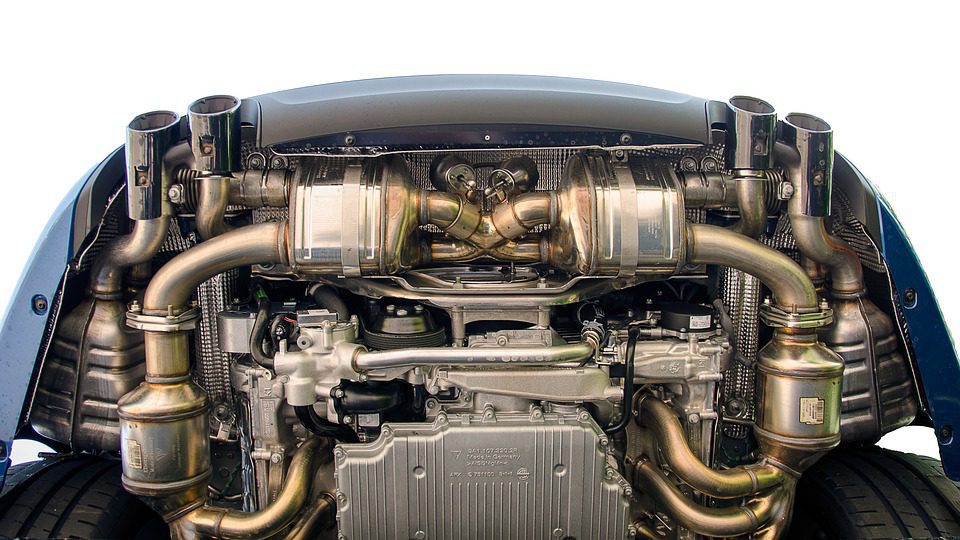Affordable Opel Corsa Engine Options for Your Budget plan
Affordable Opel Corsa Engine Options for Your Budget plan
Blog Article
Checking Out the Inner Workings of a Compact Vehicle's Engine System
As motorists, we often take for approved the intricate procedures that take place within the boundaries of our vehicle's engine system. In this exploration of a portable car's engine system, we will certainly unravel the inner operations of this mechanical symphony, dropping light on the mysteries that drive us ahead on our day-to-day journeys.
Combustion Refine Review
The combustion procedure in a compact vehicle's engine system is an important mechanism that successfully converts fuel right into power to power the car. This procedure takes place within the burning chamber of the engine, where gas and air mix, ignite, and produce regulated explosions. The burning procedure includes four main stages: intake, power, exhaust, and compression.
Throughout the intake phase, the piston relocates downward, reeling in a mixture of air and gas right into the burning chamber. The next phase, compression, includes the piston relocating up, pressing the air-fuel mix to increase its effectiveness. Subsequently, in the power phase, the ignition system sparks the compressed blend, resulting in a fast expansion of gases that compels the piston back down. This down activity generates the power required to drive the vehicle. In the exhaust stage, the scorched gases are expelled from the combustion chamber via the exhaust valve, preparing the chamber for the following cycle. This cyclic burning process is essential to the procedure of a portable car's engine system, making certain effective power conversion for propulsion.
Piston and Cyndrical Tube Communication

The piston's accurate fit within the cylinder is important for maintaining ideal compression and preventing energy loss throughout burning. Tight clearances between the piston and cylinder wall surfaces make sure effective securing, permitting the piston to relocate smoothly without allowing gases to leak past. Appropriate lubrication is also vital to minimize friction and wear between these parts, enhancing longevity and performance.
Moreover, the style and products used in manufacturing the piston and cylinder effect engine effectiveness and longevity. Modern engines usually use light-weight yet long lasting materials like light weight aluminum alloys for pistons and cyndrical tube liners to reduce inertia and enhance thermal effectiveness. In general, the harmonious interaction between the piston and cyndrical tube is fundamental to the engine's functionality and total performance.
Fuel Shot System Capability
Fuel injection systems in portable lorry engines play a vital duty in specifically delivering fuel to the burning chamber for controlled and efficient ignition. The fuel shot system functions by injecting gas into the burning chamber at the optimum moment throughout the engine's procedure (opel corsa engine). This accurate timing makes certain that the gas blends evenly with the air for proper burning, resulting in enhanced fuel performance and decreased emissions
There are primarily 2 types of gas shot systems utilized in portable car engines: port fuel shot (PFI) and direct fuel injection (DFI) PFI systems inject gas into the consumption port before the intake shutoff, while DFI go to this site systems inject fuel straight into the burning chamber. Both systems have their advantages, with DFI using far better gas atomization and PFI offering a more economical option.
Understanding Engine Cooling Systems
Reliable operation of a portable car's engine relies greatly on the navigate to this site effectiveness of its cooling mechanisms. Engine cooling is important to prevent getting too hot, which can result in serious damage and decreased performance. The cooling system in a portable lorry typically includes several elements interacting to control the engine temperature level. One vital part is the radiator, which utilizes coolant to soak up warm from the engine. As the warm coolant flows via the radiator, it launches warm right into the air, cooling off before going back to the engine. The water pump distributes the coolant through the engine and radiator, ensuring a consistent flow to regulate temperature level. Additionally, the thermostat assists manage the coolant circulation to preserve ideal engine temperature level. Some lorries additionally have cooling down followers that trigger when additional cooling is needed, such as throughout heavy web traffic or hot weather condition. Comprehending these engine cooling mechanisms is important for maintaining the efficiency and long life of a compact car's engine system.

Exhaust System Elements Explained
The ideal functioning of a small vehicle's engine air conditioning devices depends on a complementary system recognized as the exhaust system, which comprises numerous important parts for guaranteeing effective emissions and engine performance. The exhaust manifold collects exhaust gases from the her comment is here engine's cyndrical tubes and courses them to the catalytic converter.
One essential part of the exhaust system is the oxygen sensor, which monitors the oxygen degrees in the exhaust gases to aid regulate gas intake and guarantee ideal engine efficiency. opel corsa engine. Additionally, the resonator may be present in some exhaust systems to minimize sound degrees. Overall, the exhaust system plays a crucial duty in maintaining engine efficiency, minimizing unsafe discharges, and making certain a quieter driving experience for compact car owners

Verdict
In conclusion, the small automobile's engine system is a complex mix of components that collaborate to help with the burning procedure, convert gas right into energy, and remove waste gases. Comprehending the inner functions of the engine system, consisting of the piston and cylinder interaction, gas shot system, engine cooling mechanisms, and exhaust system elements, is critical for maintaining ideal performance and efficiency of the car.
The combustion process in a portable automobile's engine system is a critical device that effectively transforms fuel right into energy to power the lorry.Gas injection systems in small automobile engines play an important function in exactly delivering fuel to the combustion chamber for efficient and regulated ignition.There are largely 2 types of gas shot systems used in compact lorry engines: port gas shot (PFI) and straight fuel injection (DFI) Comprehending these engine air conditioning devices is crucial for preserving the performance and durability of a portable automobile's engine system.
The ideal performance of a portable car's engine air conditioning devices depends on a complementary system recognized as the exhaust system, which makes up different vital elements for guaranteeing efficient exhausts and engine efficiency.
Report this page